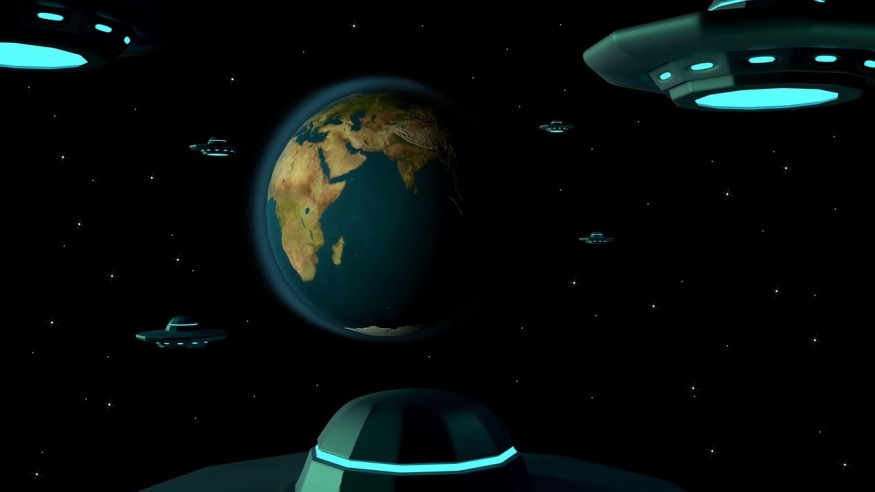Growing curiosity surrounds unidentified flying objects (UFOs) following the Pentagon's 2021 report of anomalous objects in US airspace, termed unidentified aerial phenomena (UAP). In the present day of 2023, NASA has taken proactive steps by establishing a dedicated panel to scrutinize these reports and appointing a director for UAP research.

Challenging Assumptions on Extraterrestrial Probes and UFO Phenomena
The Pentagon's recent release of footage depicting enigmatic metallic orbs has intensified intrigue. Notably, former intelligence officer David Grusch testified under oath before the US Congress, revealing his interviews with approximately 40 individuals involved in covert programs related to crashed UFOs.
Intrigued by the prospect of discovering extraterrestrial entities, Assistant Professor Beatriz Villaroel from Stockholm University contemplates the vastness of the Milky Way galaxy, which harbors 40 billion Earth-sized, potentially habitable planets. The evidence of human innovation, as demonstrated by projects like Voyager and Pioneer, highlights humans' capacity to launch probes toward nearby stars.
Initiatives such as the Breakthrough Starshot program aim to reach Alpha Centauri within a few decades, employing groundbreaking propulsion methods. The consideration of potential economic advantages suggests that sending probes may outpace radio or laser communication, particularly in non-urgent situations.
Villaroel ponders the feasibility of other civilizations dispatching probes to the Solar System, conceivably lurking on asteroids or entering Earth's atmosphere, masquerading as UFOs.
While some contend that alien probes must adhere to the current understanding of physics and engineering, the individual counters that evolving knowledge indicates otherwise. Reflecting on humanity's recent achievements, such as the Wright brothers' flight and Einstein's theory of relativity, challenges the notion that older civilizations could not possess advanced knowledge.
The consideration arises that if a civilization evolves into artificial intelligence, its potential longevity might lead to a nonchalant perspective on interstellar travel. Despite astronomers' skepticism concerning the US Navy videos and government reports, the quest for substantial evidence and data remains a paramount pursuit.
READ ALSO : Extraterrestrial Life Forms Might Be Waiting for the Right Time to Contact Earth, New Study Suggests
Testing for Alien Probes Through Night Sky Observation
Determining the presence of alien probes near Earth and their potential connection to the UFO phenomenon involves various testing methodologies. A crucial approach is the analysis of materials from potentially crashed UFOs, requiring advanced techniques to ascertain if these wreckage pieces exhibit exotic or distinctly different manufacturing characteristics.
Acquiring such samples, often rumored to be in private hands, might become more feasible with proposed legislation in the United States mandating the surrender of all artificial materials from non-human intelligence to the US government.
In ongoing projects, efforts focus on detecting artificial non-human objects through the observation of short light flashes in the night sky. These brief flashes can result from highly reflective surfaces or artificial objects emitting internal light, often exhibiting repeated patterns as the object tumbles in its orbit.
Historical photographic plates predating Sputnik 1's launch in 1957 have revealed unexplained transient light sources, suggesting the potential presence of moving objects. The ExoProbe research program employs multiple telescopes to search for short light flashes, using parallax measurements to calculate the distance to the object and sophisticated methods to filter out space debris and satellites.
The ExoProbe project prioritizes observing light flashes in multiple telescopes to precisely measure parallax and determine the three-dimensional location of potential alien objects, with the ultimate goal of identifying and studying them further.
This shift from decades of radio frequency searches for extraterrestrial civilizations signifies a critical exploration of new paths, underscoring the importance of investigating closer to home and embracing the insatiable curiosity propelling this endeavor.
RELATED ARTICLE:
How To Recognize Potential Signs of Extraterrestrial Life: A Guide To Identifying Aliens
Check out more news and information on Space in Science Times.
© 2025 ScienceTimes.com All rights reserved. Do not reproduce without permission. The window to the world of Science Times.












